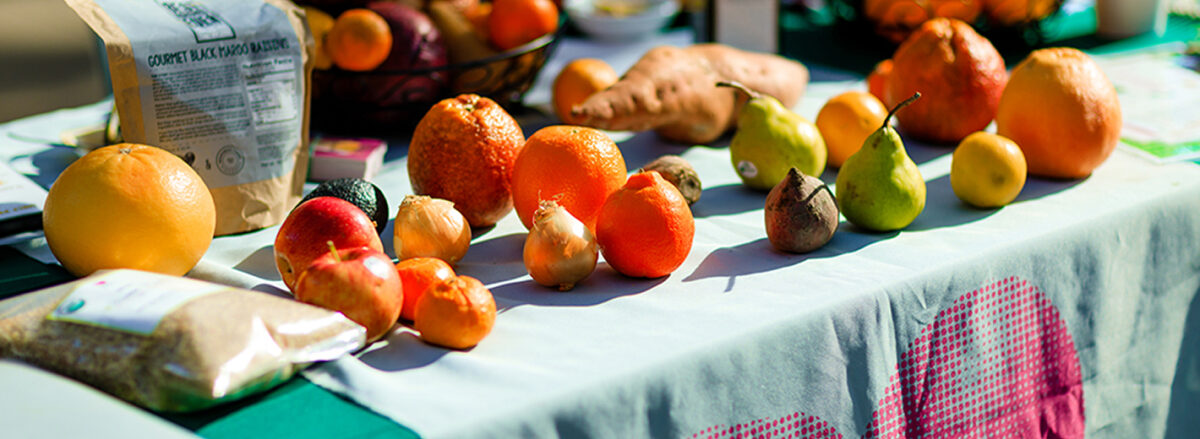The Biden-Harris Administration’s Plan to Fight Food Waste

At Bon Appétit Management Company, we’ve long seen food loss and food waste prevention as critical levers in combatting the climate crisis. We started talking about food waste in 2007 with our Low Carbon Diet and ushered in our Low Carbon Lifestyle in 2015. Since then, the dialogue around waste reduction and prevention has grown widely. So we were pleased to see the Biden-Harris Draft National Strategy for Reducing Food Loss and Waste and Recycling Organics, as recently published in a joint effort via the USDA, EPA, and FDA and released at COP28 in December.
It’s encouraging to see the Administration prioritize food loss and waste reduction in their overall approach to fighting climate change and advancing an equitable and circular economy. The strategy also underscores the intersectional benefits of reducing food waste and loss nationally by creating a more efficient and equitable food system. These intentions underscore the opportunity to not only reduce the environmental impact of feeding our growing population, but to also improve economic security for farmers, provide opportunities for new jobs and businesses, and support food redistribution efforts.
While there is still much work to be done to actualize this strategy and ensure lasting funding, it is galvanizing to see a vision for food loss and waste reduction that shows how applied efforts to these issues could benefit people and the planet in tangible ways.
Making Food Loss and Food Waste a Priority through Collaboration and Communication
In structure, the strategy shares four broad objectives to drive progress toward the national goal of reducing U.S. food loss and waste by 50% by 2030: Preventing both food loss and waste, increasing the recycling rate for all organic waste, and supporting policies that incentivize and encourage the first three objectives. Each build upon the ongoing work of the USDA, EPA, and FDA and focuses on preventing food loss and waste in both upstream (what happens to food throughout the supply chain) and downstream (what happens to food after it is sold) contexts, with significant attention to preventing food loss and waste in the first place.
One highlight that resonates for us at Bon Appétit is the call for increasing supply chain efficiencies through a deeper collaboration between farmers, processors, distributors, retailers, and emergency food assistance programs. The strategy commits to preventing food loss within supply chains through tactics such as supporting producers with access to financing for on-farm storage through the USDA and the Farm Service Agency. It also highlights the need to strengthen connections between producers, providers, food recovery organizations, and emergency feeding organizations and shares their commitment through funding from the USDA’s National Institute for Food and Agriculture and Local Agriculture Market Program.
We support these ideas because in our experience, they work. Shortened supply chains and increased regular communication with producers via our Farm to Fork program are key tactics for our waste reduction strategy, along with developing strong relationships with our local food recovery organizations. These relational activities are paired with our proprietary app and tracking system, Waste Not™, which tracks and inspires waste-reducing behavior change in our kitchens. This multi-pronged approach to sourcing has food loss and waste reduction and prevention baked into the structure and we are committed to its success.
Consumer Education is Key
When examining strategies for minimizing food waste on the consumer side, this report highlights the need to increase funding for consumer education and research through the EPA’s Science to Achieve Results grants, and their call for the creation of a “Center for Research, Behavioral Economics, and Extension on Food, Loss, and Waste” through the USDA’s National Institute of Food and Agriculture. Together, these commitments help increase household awareness, which is critical, since a large percentage of overall food waste happens at the household level.
Lastly, the strategy shares upstream solutions to reduce consumer food waste, such as examining packaging design, date labeling, portion sizes, and marketing campaigns from all sectors. At Bon Appétit, we share the call for public-private partnerships in developing packaging innovations and putting the pressure on policymakers to make it easier for all consumers to waste less food. As a result of this, we recently signed in support of the Food Date Labeling Act to promote more effective date labeling – a simple but effective step in the right direction.
Reducing food loss and food waste is a complex issue that will require layers of stakeholders and collaborators doing their part, and private-public partnership will be a key part of its success. While the document clearly realizes and encourages these types of partnerships, we look forward to seeing a more thoroughly developed plan for cross-sectoral collaboration and a plan for lasting funding for the breadth of programs proposed.
The Biden-Harris administration is seeking public comments on their draft strategy until February 3, 2024. You can find the strategy document here and the link to submit a comment here.